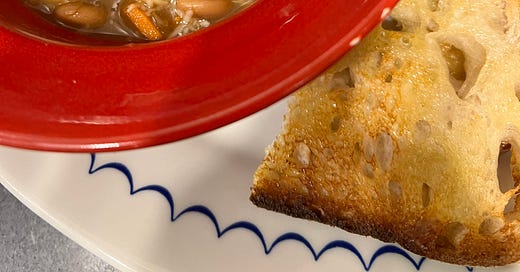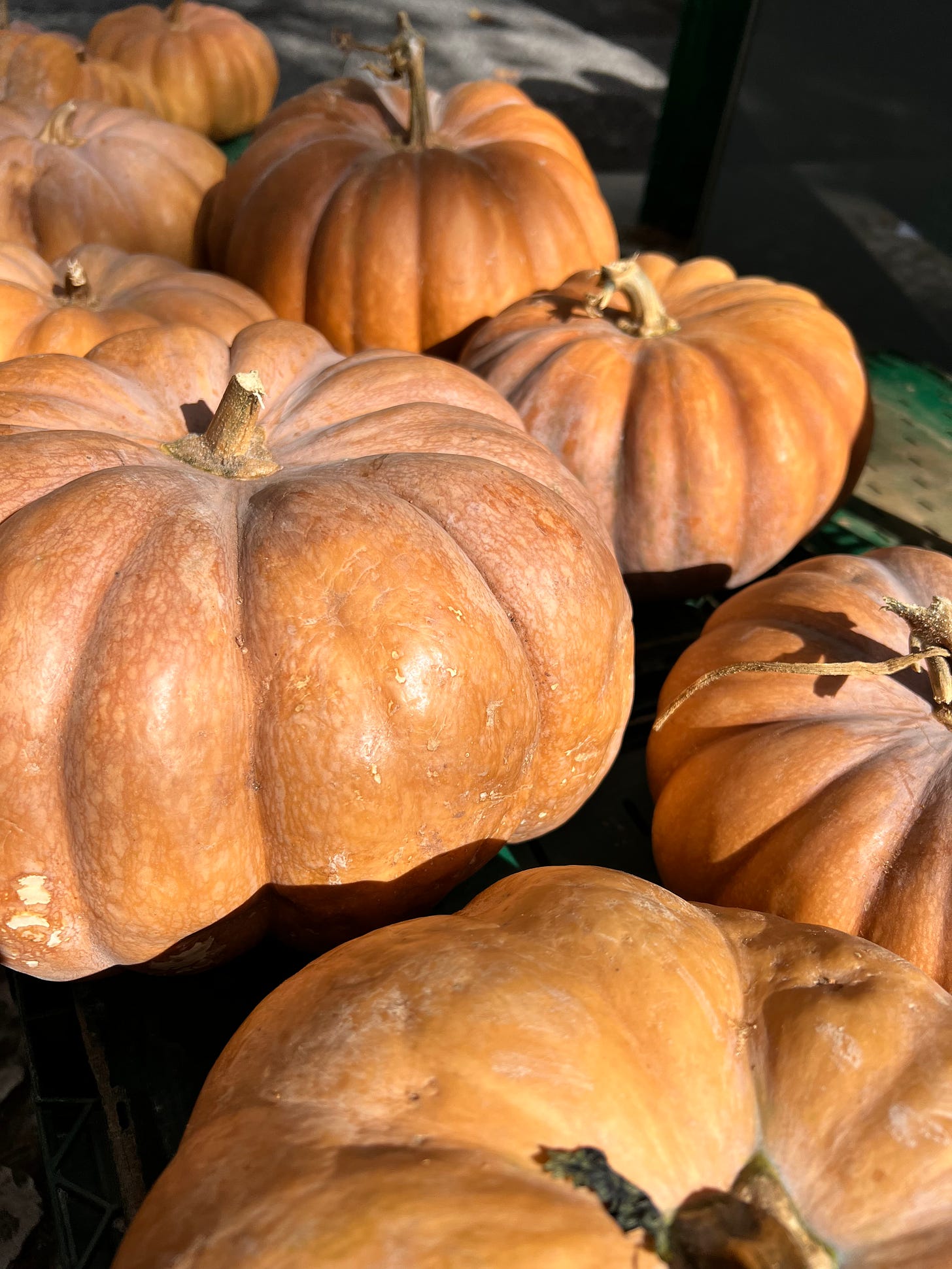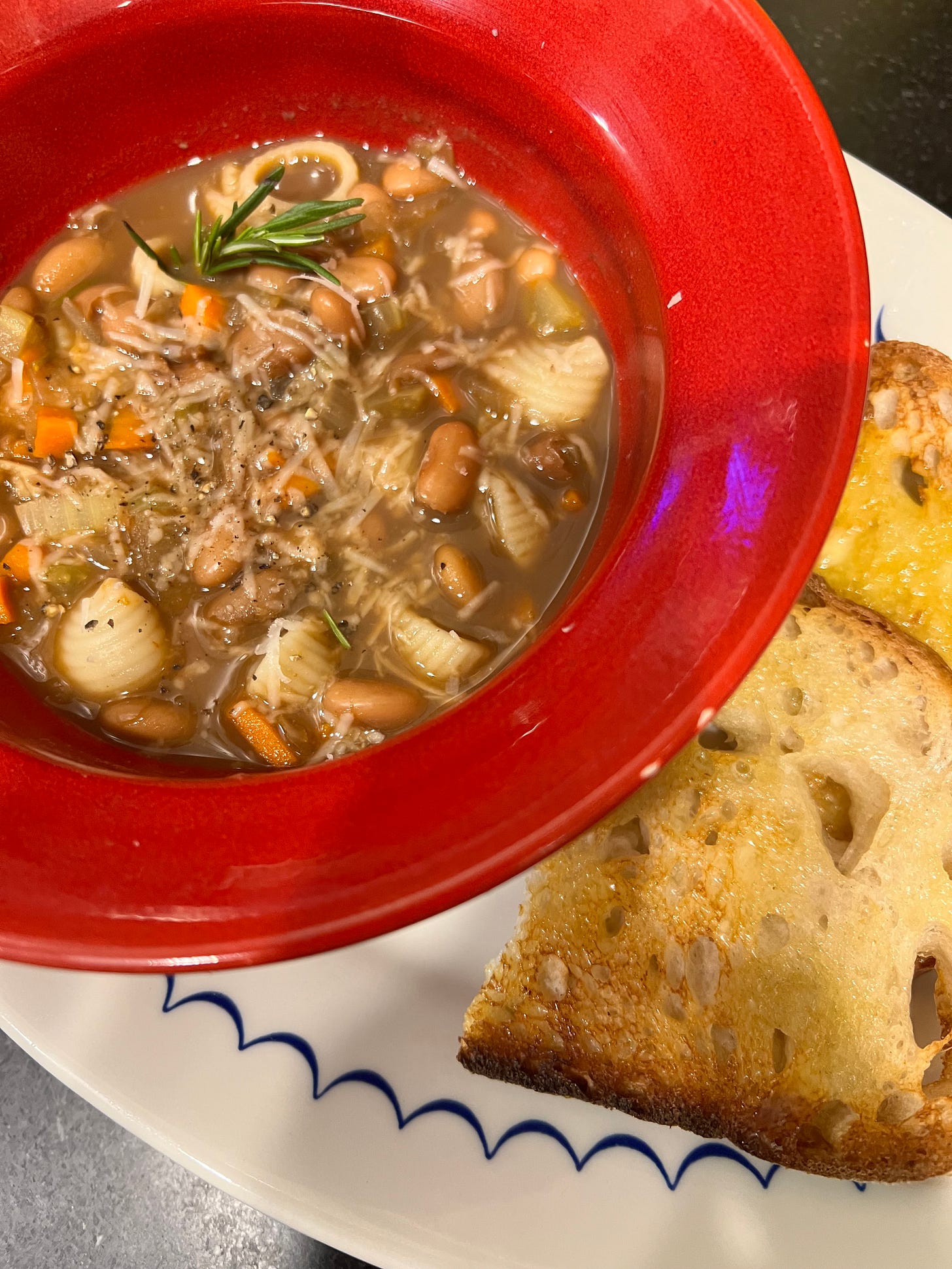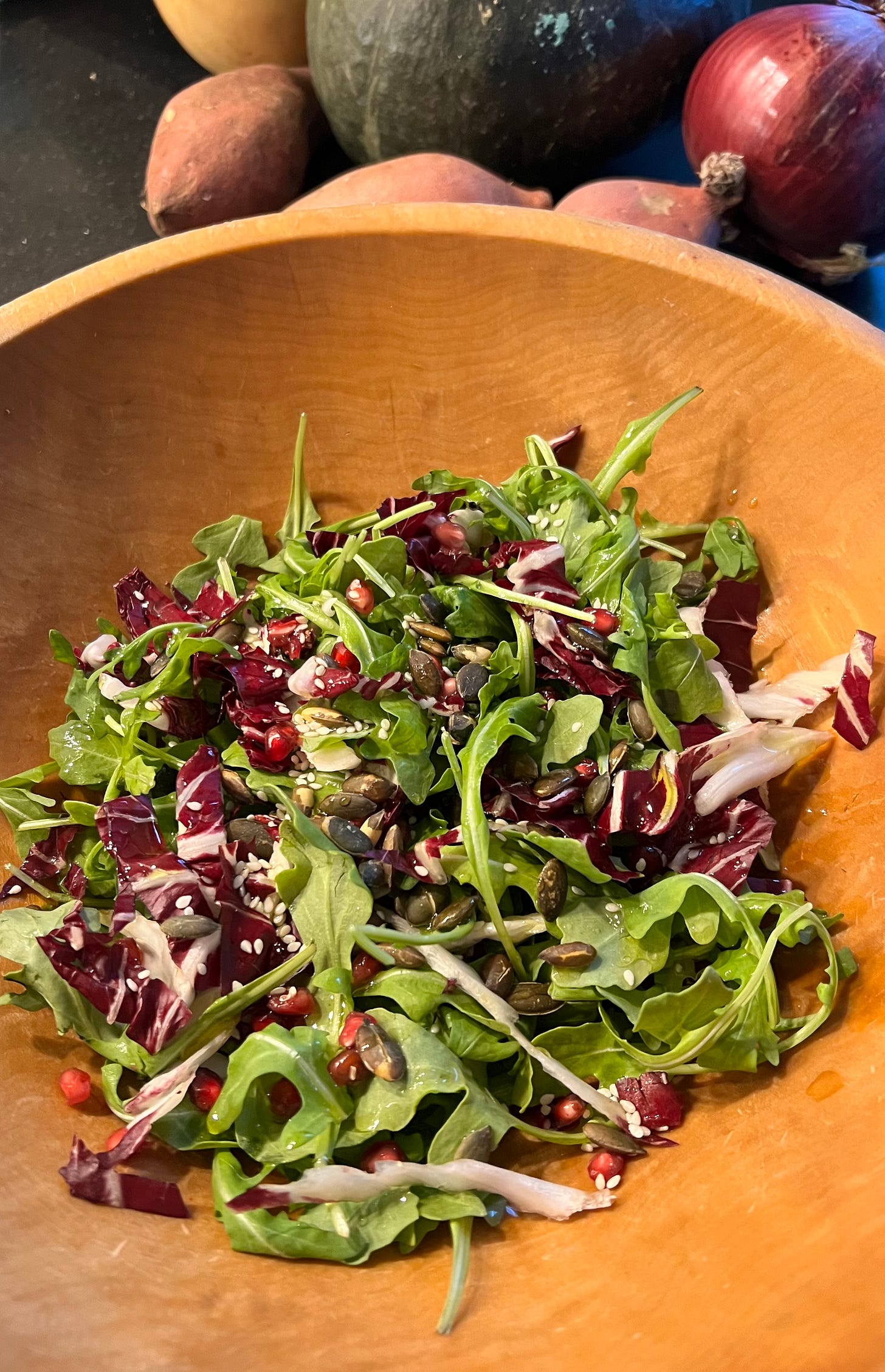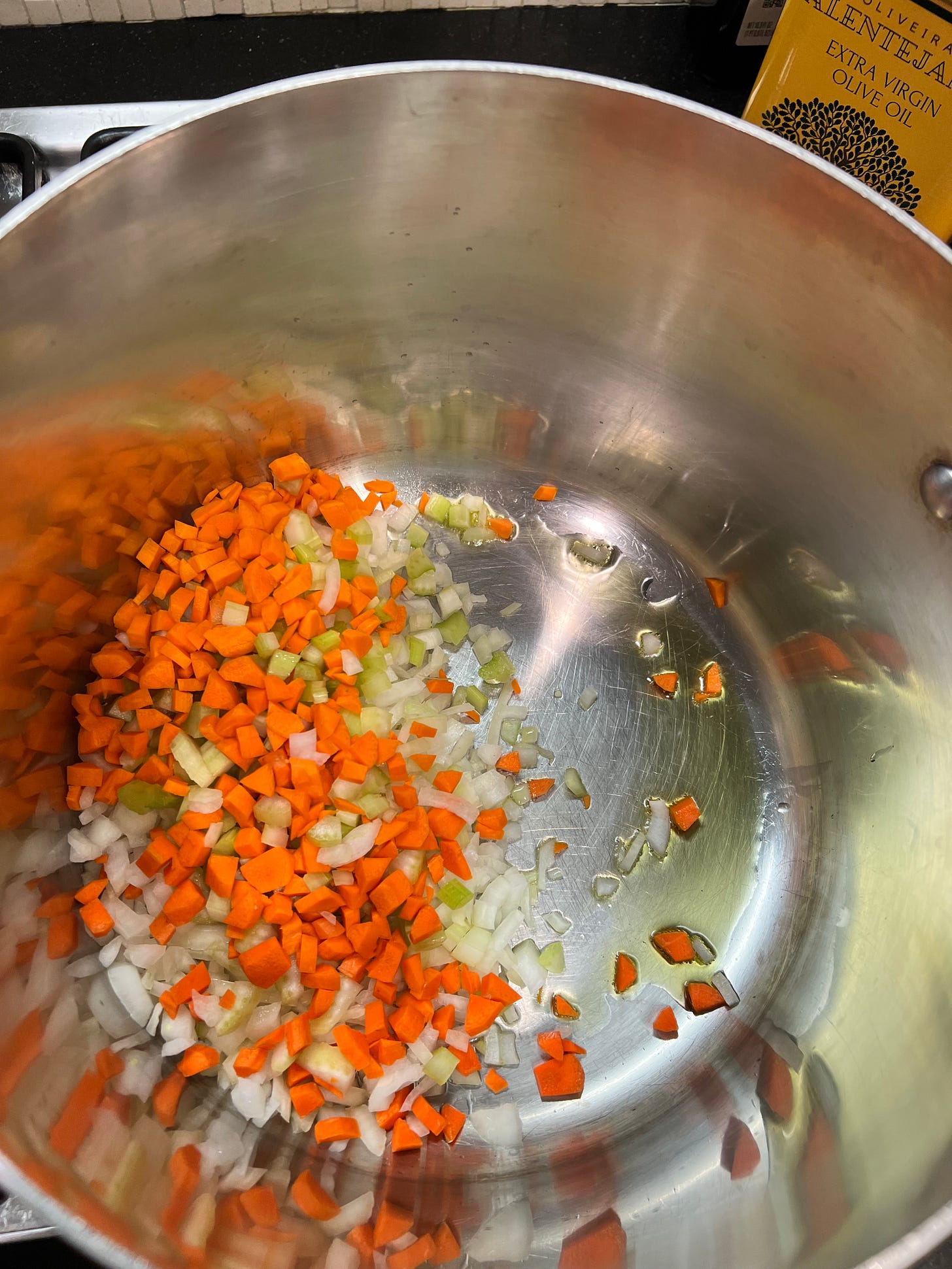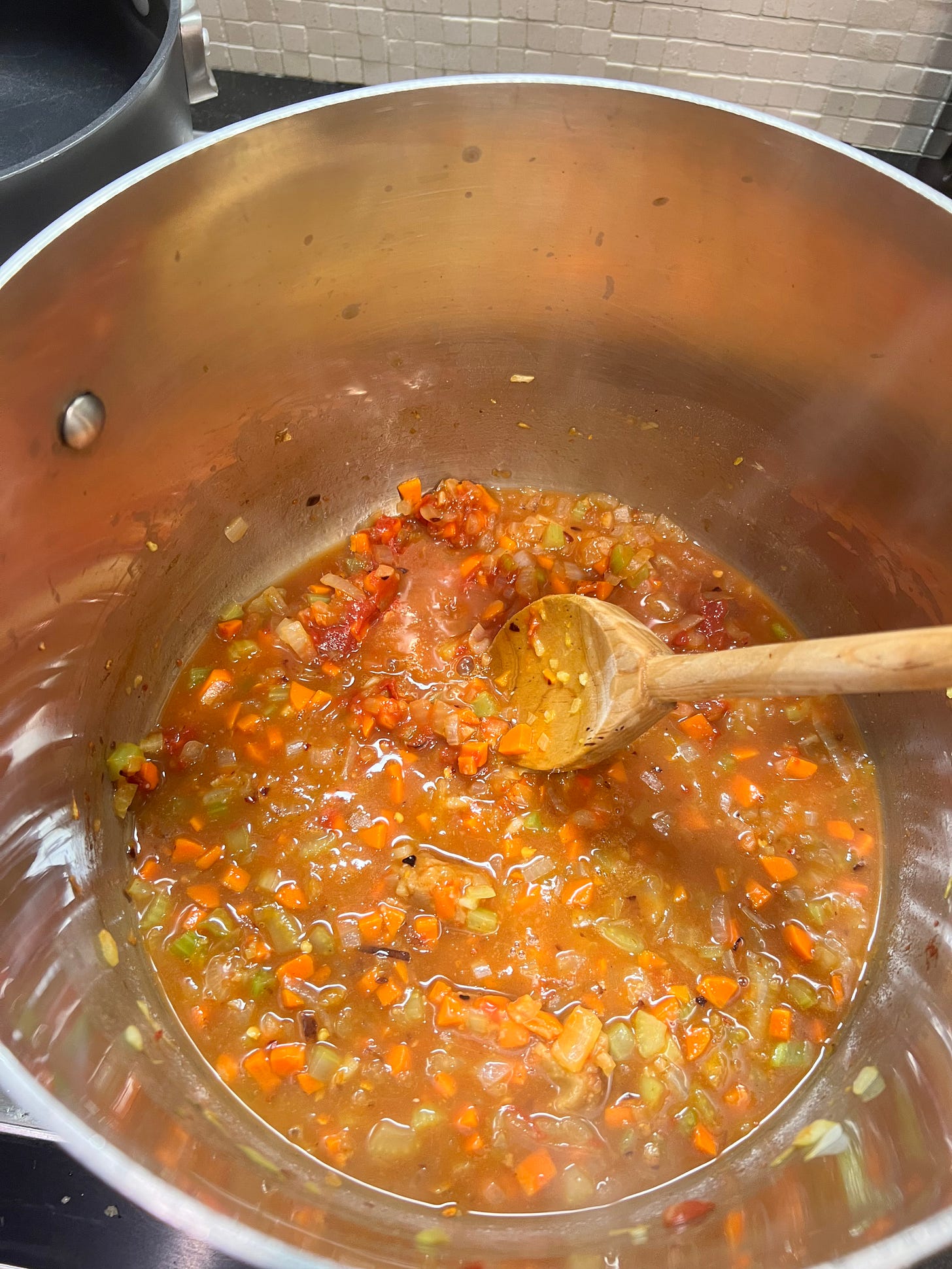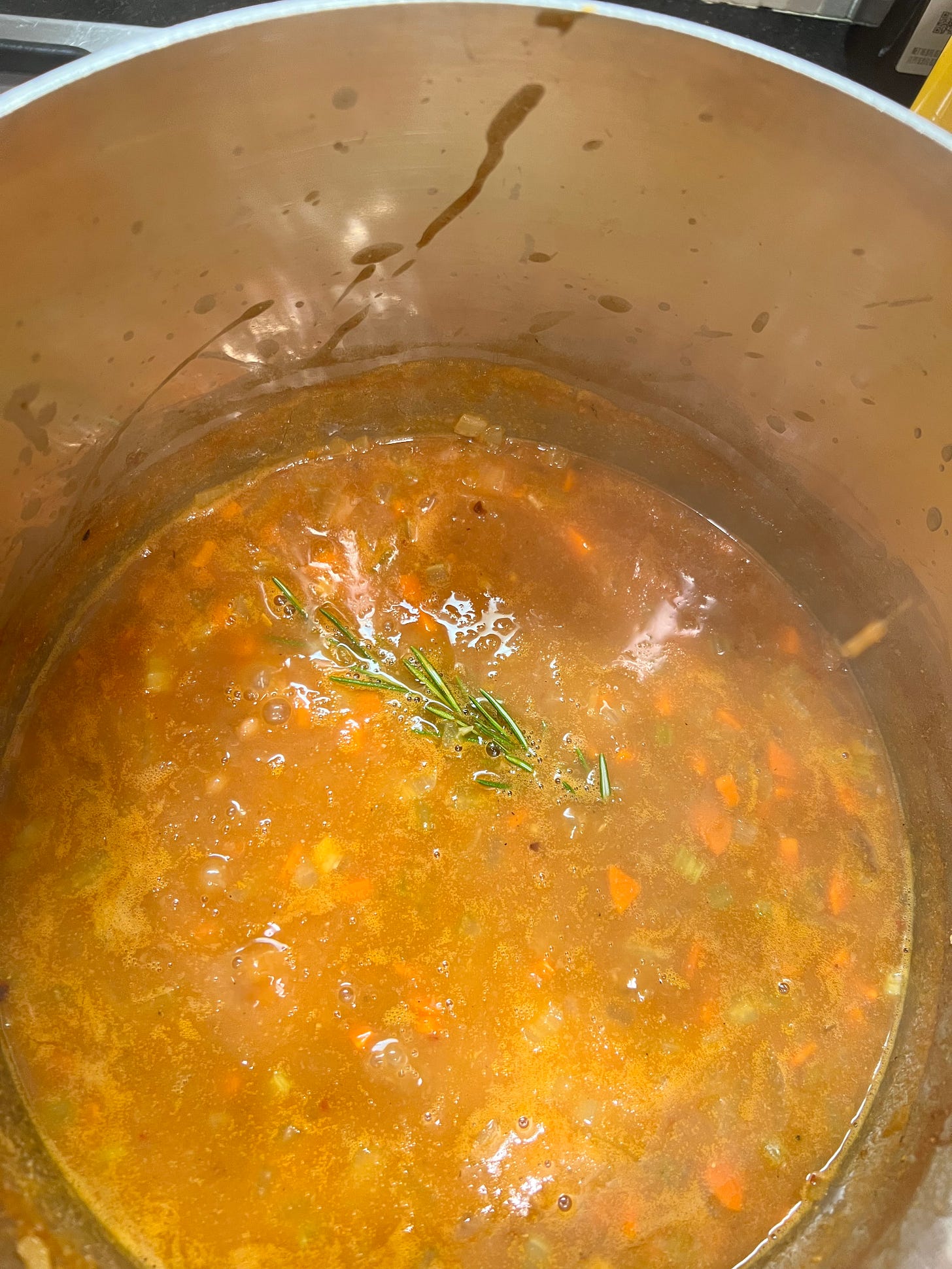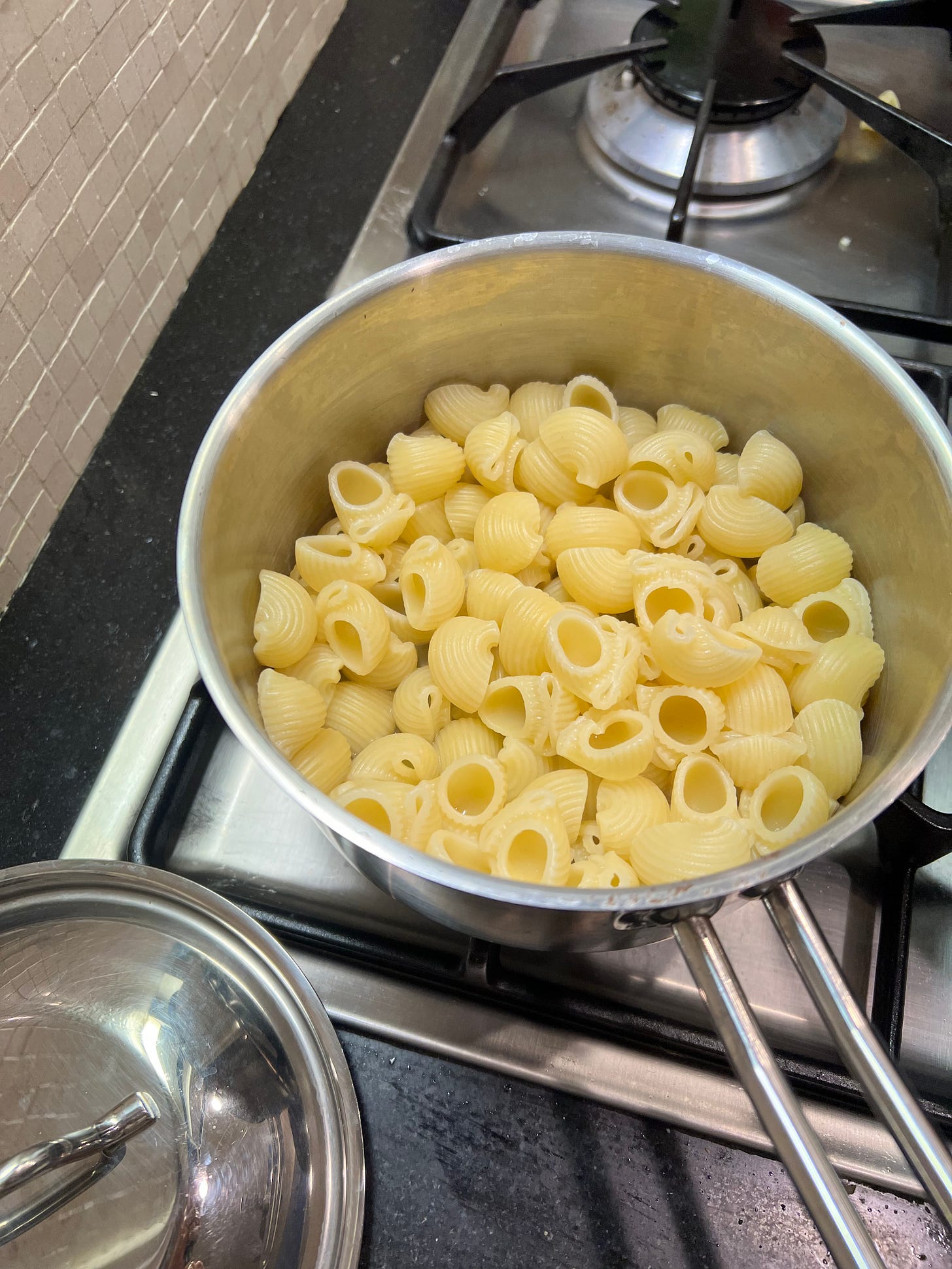Triglycerides and bile and beans, oh my!
I have had many iterations of eating, from whole foods plant-based to pescatarian. I actually do not like putting a label on my consumption of food. Lets just say I eat a diverse amount of plants and some animal protein-I love eggs. While I was in my whole food plant-based phase, I followed and joined Molly Patrick’s whole food plant-based community. I was working many hours each week and I wanted to learn how to batch cook delicious meals on the weekend so when I came home I knew what dinner would be and preparation was minimal. This was back in 2018.
It was through this community where I learned to use multiple spices, vinegars, seeds and other homemade sauces, condiments, and potions to make our daily meals celebrations for our taste buds. I had some hits and also some misses but it is through those experiments that gave me the confidence today to take any recipe and mess around with it to make it mine.
An additional benefit of this plant-based community was receiving her weekly newsletter and because it was online we had the benefit of accessing her Zoom conversations with members of the community who had come to the group with multiple medical issues, from coronary heart disease, to high cholesterol and type 2 diabetes. They were on many medications and the results of their blood tests had their doctors recommending that they change their diets “or else”.
This community was a monthly subscription, therefore, the individuals that we heard from were those who had taken the initiative to join, pay the cost, and create the meals. The likelihood of them having decent results is higher from this fact alone. The through line to their stories was they started eating plants over the course of weeks and months and then when they went back for follow up medical visits they learned the numbers for their blood tests had improved as had their weight and their general mood. Some to the point where they were no longer taking medication or at least significantly reduced the amount of medicine and the dosage. Wonderful news! The conversations were engaging and the guests would always talk about the process and it is a process.
What they did not talk about is what was happening within their body to allow for this transformation in health. That's the piece that makes me curious. I understand if you are eating plants your body benefits. There are multiple studies about your health, and with proper exercise and diet it will improve. Accepted. However, this last year I lived with my father and since I love to cook I tried to create meals that he would eat. He doesn’t love plants but he is usually a good sport about my beans.
My father has type 2 diabetes and over the last couple of years my sister and I have watched him negotiate food and insulin doses and exercise. Sometimes from afar but when you live together you have a front row seat. But this newsletter is not about my dad today but rather why I was so happy to learn that one of the best things you can do for blood sugar is to eat soluble fiber. Here’s why:
As I state at the bottom of each newsletter I am not a doctor. Please read my summary with that in mind and know that I make the assumption that all of you took a biology class in 9th grade and learned about cells and mitochondria and most likely forgot most but you may remember a bit, too. It may even pique your interest to do more research. I love learning and when I know why or what is happening when I eat beans it makes me feel that much better serving them up for myself and others.
How do we make energy
Lets start by saying we make energy from the food we eat. Our body creates glucose from the carbohydrates that we consume and we use that glucose for energy right now or store it for later. Our body needs insulin to help the glucose travel to where it needs to go. This is a normal process and it happens many times all day long. We have insulin receptor sites on all of our cells in our body. The insulin triggers the receptor site to open, the glucose is let in the doorway and goes to the mitochondria of the cell and is burned for energy. Presto, you now have energy to do whatever it is you were doing. Work, play, make dinner, walk the dog, you understand.
Triglycerides and insulin resistance
When we have insulin resistance our cell walls are coated with triglycerides. You may have heard of triglycerides from your doctor’s visits when they test your blood cholesterol level. They also give you a number for triglycerides. The normal range is below 150, however, there are nutritionists that argue it should be much lower. The insulin comes knocking on the cell to trigger the receptor site to open to allow the glucose in for energy use but since the cell wall is covered in this grease the insulin cannot trigger the receptor site to open. Compare it to a greasy door knob, you wouldn’t be able to open the door. This grease, this fat, is triglycerides. This is what causes insulin resistance.
Here is where it gets even more interesting. Bile is made out of fat, specifically triglycerides. Remember, soluble fiber attaches to bile and is secreted into the toilet. The more bile you clear out, you have to make new bile to continue the process of carrying out all of the fat soluble waste. How does the body make new bile? Out of triglycerides. This helps remove the grease around our receptor sites on the cells because the liver needs triglycerides to make new bile. The liver uses current triglycerides within the body to make bile. Wherever the triglycerides are, in this case on the cell walls, will leave the receptor sites, go back through the bloodstream to the liver to be made into bile. Then as bile it goes into the GI tract, binds to soluble fiber (from the beans), and continues to the toilet.
The liver is constantly working to remove the greasy coating but it is built back up if you don’t eat enough soluble fiber. As discussed when I first started this newsletter, 95% of our bile is recycled unless we eat soluble fiber. This is a love story for beans and why they are so helpful in keeping our cells in working order and preventing the build up of the greasy coat in the first place. I can’t tell you how happy I was to understand this process. I am a visual learner and I feel like I can “see” what happens. First, when we create the yucky greasy coating and also the removal of the greasy coating to make more bile. Our body is truly a wonder. If you have been slowly adding beans into your diet, this information will give you a boost to continue. See below for a cozy vegetarian version of an Italian stalwart.
Recommended recipe:
Vegetarian Pasta e Fagioli (pasta and beans)
Talk about messing with a recipe. If you like the original Italian versions of pasta e fagioli with either Italian sausage or pancetta, please eat it. This version, inspired from The Rancho Gordo Vegetarian Cooking, gets its umami from the tomato paste and miso paste. I just returned home from visiting my daughter and son-in-law in Portugal so I used canned beans instead of making homemade. Additionally, I use pinto beans instead of the traditional and delicious cannellini because I have members of the family who are allergic to white beans. With all this in mind the soup was so comforting and healthy we devoured it last evening. I served it with an arugula and radicchio salad with apple cider vinegar and olive oil because I love the bitter greens and cider vinegar cutting through the stewy soup
Ingredients
Olive oil
1 medium onion (diced)
1 large celery stalk (diced)
1 large carrot (diced)
2 garlic cloves (minced)
¼-½ teaspoon red pepper flakes (I used just over a ½ tsp but I like a bite)
1 heaping tablespoon tomato paste
1 heaping tablespoon miso paste (light or dark)
2 15 oz cans of pinto beans and juices or ~ 3-4 cups cooked beans in the broth
2 cups of broth if you are not using homemade beans. Add 1 cup at a time. If you are using homemade beans you will use all of the broth from the beans.
1 rosemary spring
Pecorino romano cheese for grating over the bowl
2 cups of dried pasta
In a medium stockpot or dutch oven, heat up the olive oil for a couple of minutes over medium heat. Add your mirepoix (celery, onion, carrots); cook until just before soft, about 4 minutes, add the garlic and cook for another two minutes.
Add the red pepper flakes, tomato paste, and miso paste. Stir to incorporate into the veggies and until you can smell the gorgeous aroma, approximately 3 minutes.
Add the two cans of beans including their broth. Stir the beans and veggies slowly so they do not break apart. Add one cup of vegetable broth and the sprig of rosemary. I did not add any salt because the miso gave it a wonderful taste as did the pecorino. Taste your soup and decide if you want to add any salt here. Continue cooking at a gentle simmer and add the second cup of broth. Keep simmering until the soup is at a consistency that you like. I like my pasta e fagioli more stewy than soupy.
In the meantime, put on a pot of water to boil your pasta. Add a good pinch of salt. The original recipe calls for a pound of pasta. I prefer less pasta to my bean ratio and cooked two dry cups of pasta. I used Stonewall’s Kitchen conchiglie shape because that was what I had and I love the shape. Cook your pasta according to your directions and begin to test it at least 1-2 minutes before it says it will be done. My pasta directions indicated it takes 9-11 minutes and I stopped it at 7 minutes and drained almost all of the water out. You can see below I put the pasta back into the saucepan while my soup finished simmering. Some add the pasta to the soup first. I like my pasta more al dente than mushy, that is why I stopped at 7 minutes and didn’t add it to the stockpot. It's up to you
.
I take a ladle full of pasta and place at the bottom of the soup bowl and then add 1½ - 2 ladles of soup. Grated pecorino and pepper over the top. If you have a peppery olive oil that is recommended to drizzle over the top as well. I did not, so I used my pepper grinder instead.
Makes 4 good bowls, 6 appetizer portions.
Enjoy
Contact
If you have any additional questions on insulin, triglycerides coating our cell walls or incorporating beans into your diet, please email me at Denisemancieri1@gmail.com. Feel free to comment below if there are topics you would like to see.
Please like this newsletter by clicking the heart emoji at the top or below if you find it may assist you or others. Thank you!
Note: I am not a doctor. I am a teacher and an educator with an earned doctorate in educational leadership. I enjoy research and I can take large amounts of information and parse it out into easily understood and digestible steps so people understand what is happening to their body and possible steps to reverse it with food as medicine. I have healed my own GI issues through choices with food. I followed Karen Hurd’s bean protocol diet, I meditated and still do and I healed. I feel compelled to be in service and educate others as the more people eating beans, alongside a healthy diet and sharing their stories the more people will live a healthier existence. Joy, peace and freedom abound. Please see your doctor and discuss nutritional options before you change any course of action with your health.

